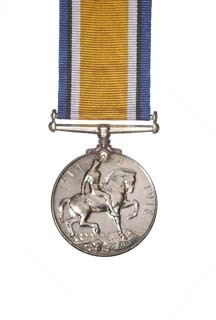 Press F11 to limit top toolbar - Press
again for toolbar to return Press F11 to limit top toolbar - Press
again for toolbar to return

ERNEST ARTHUR GRIFFIN, eldest son of Arthur and Helena Maria
Griffin, of Inaha, South Taranaki was born 23 Feb 1898 in New
Plymouth. Ernest was a cheesemaker at Riverdale Cheese factory, Inaha,
employer W Crawford. He had been a cadet with the Manaia Senior Cadets and
first attempted to enlist at Wanganui in August 1916 but was found to be
under age. In Hawera in November 1917 he again enlisted and was accepted
as a Rifleman with the New Zealand Rifle Brigade, 1st Bn. 3rd, Regimental
No. 74911. He was promoted to Lance Corporal and was killed in action aged
just 20 years on 08/10/1918 and buried at the Naves Communal Cemetery Ext.
Nord, France 111 B.16
6th March 1918 Ernest Griffin marched into
Featherston Camp
 - his Rank:
Private, Unit: B Company 29 Reinforcements - his Rank:
Private, Unit: B Company 29 Reinforcements23 March 1918 - Ernest is promoted to Lance
Corporal and on 27 April 1918 he is transferred to B Company 38
Reinforcements
Following training at the Featherston Military Camp, the troops marched over the Rimutaka Hill to Wellington Harbour (Photo: Wairarapa Archive) 
They boarded His Majesty's New Zealand
Troop Ship No 105 SS Remuera Left for France 25 September 1918 and
arriving there, marched to New Zealand's Infantry and General Base Depot
at Etaples 27
September 1918
 Ernest joins the B Company 3 New Zealand Rifle Brigade, and is within the
combat Field 30th September 1918
Ernest joins the B Company 3 New Zealand Rifle Brigade, and is within the
combat Field 30th September 1918
Ernest is killed on the 8th October 1918 and is
buried at Naves Communal Cemetery Extension, France. Plot 3, Row B, Grave
16.
He travelled halfway round the world where he experienced horrific conditions under cannon fire and survived just 13 days of war. We can only reflect what this war meant to our nation - About 100,000 were sent overseas to fight in France, Belgium, Egypt, the Middle East, and Gallipoli. Of these, 16,697 New Zealanders were killed and 41,317 were wounded during the war. Approximately a further thousand men died within five years of the war's end, as a result of injuries sustained, and 507 died while training in New Zealand between 1914 and 1918 ? a 58 percent casualty rate. (Statistics) Medals Awarded: British War Medal and the
Victory Medal
The BRITISH WAR MEDAL was instituted in 1919 to recognise the successful conclusion of the First World War (1914-1918). Its coverage was later extended to recognise service until 1920, recognising mine clearing operations at sea, and participation in operations in North and South Russia, the eastern Baltic, Siberia, the Black Sea and the Caspian.The obverse of this medal shows the uncrowned left-facing profile of King George V by Sir Bertram Mackennal. The reverse of the medal depicts St George on horseback trampling underfoot the eagle shield of the Central Powers, and a skull and cross-bones (the emblems of death). Above, the sun has risen in victory. The figure is mounted on horseback to symbolise man's mind controlling a force of greater strength than his own, and thus alludes to the scientific and mechanical developments and machines which helped to win the war. The ribbon consists of an orange watered centre, with thin stripes of white and black at each side, and borders of royal blue.
BRONZE PLAQUE - This measures approximately 12 cm in diameter and was first produced at Acton, West London. The plaques were given to the family of
every soldier and sailor who died, or was killed, between 4th August 1914
and 10th January 1920 (the date of ratification of the Treaty Of Peace
with Germany) while serving in HM Forces. 'HE DIED FOR FREEDOM AND HONOUR' DESCRIPTION : BRITANNIA STANDING
HOLDING A LAUREL WREATH ABOVE CARTOUCHE TO CONTAIN THE SOLDIERS NAME. AT
HER FEET THE BRITISH LION AND LAUREL BRANCH. IN THE FIELD DOLPHINS. IN THE
EXERGE, BRITISH LION KILLING A PRUSSIAN EAGLE.
Click here Ernest Arthur Griffin - WW1
|




















